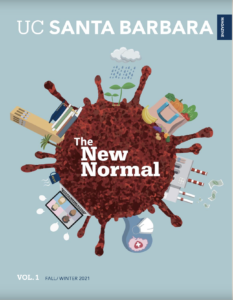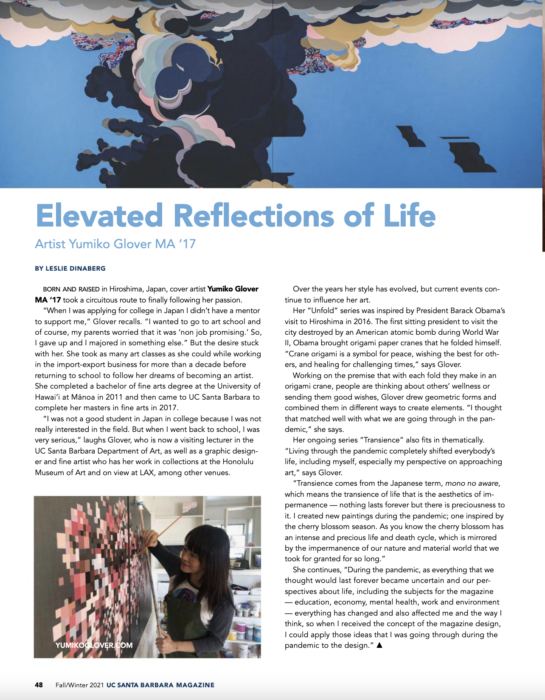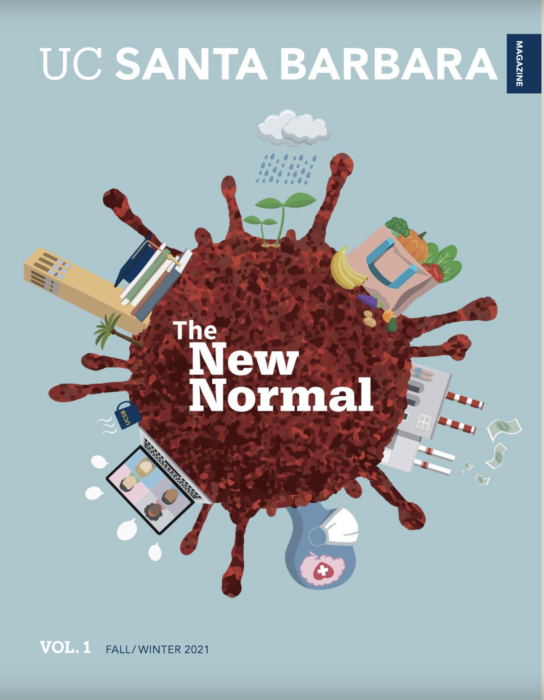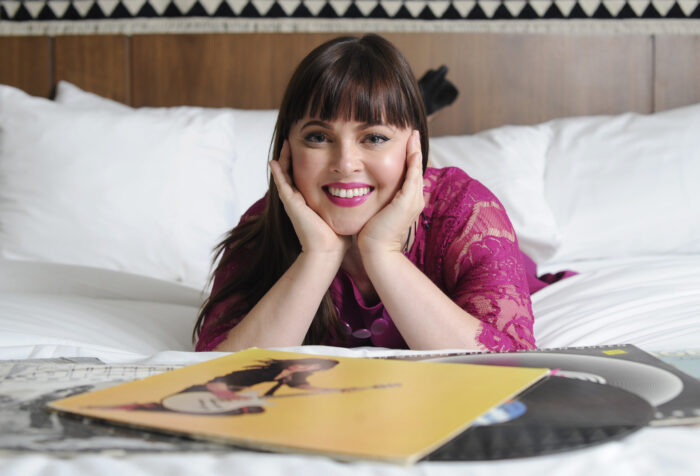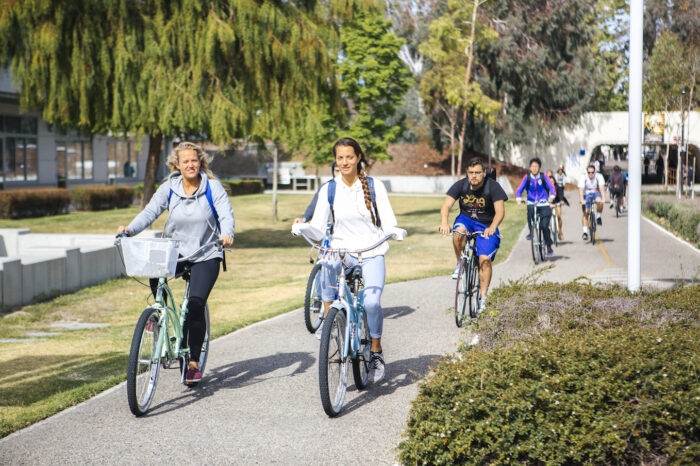I had the pleasure of writing the Santa Barbara Independent special “Schools of Thought Issue once again in fall of 2022. To read the entire issue online, click here. 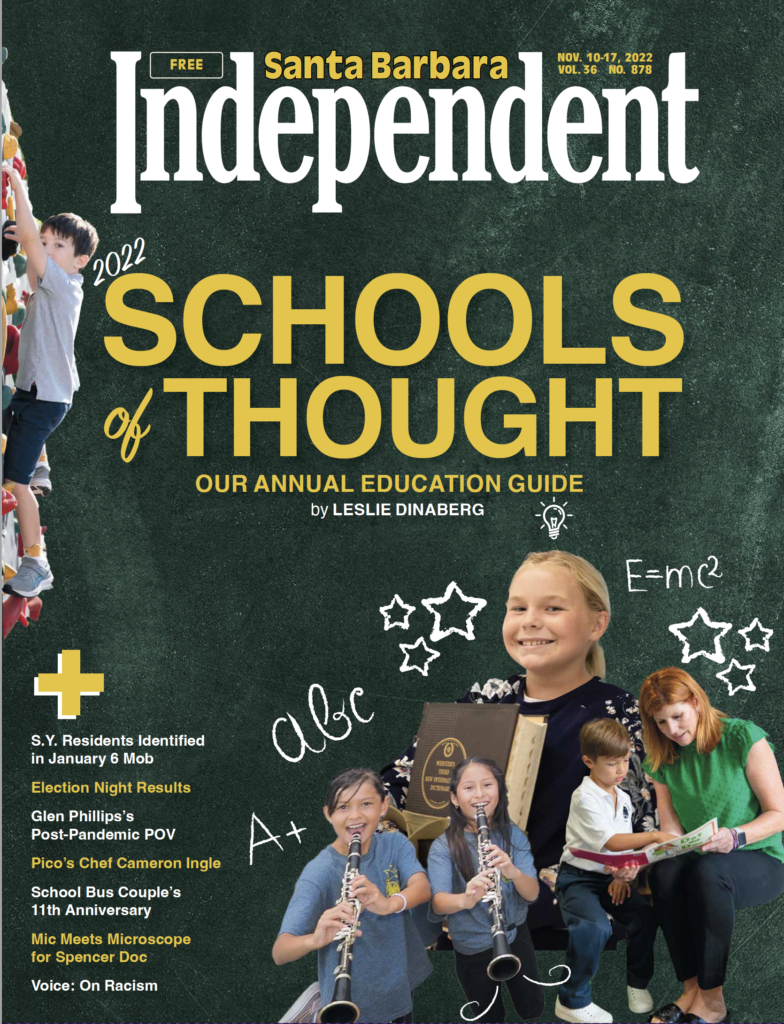 I
I 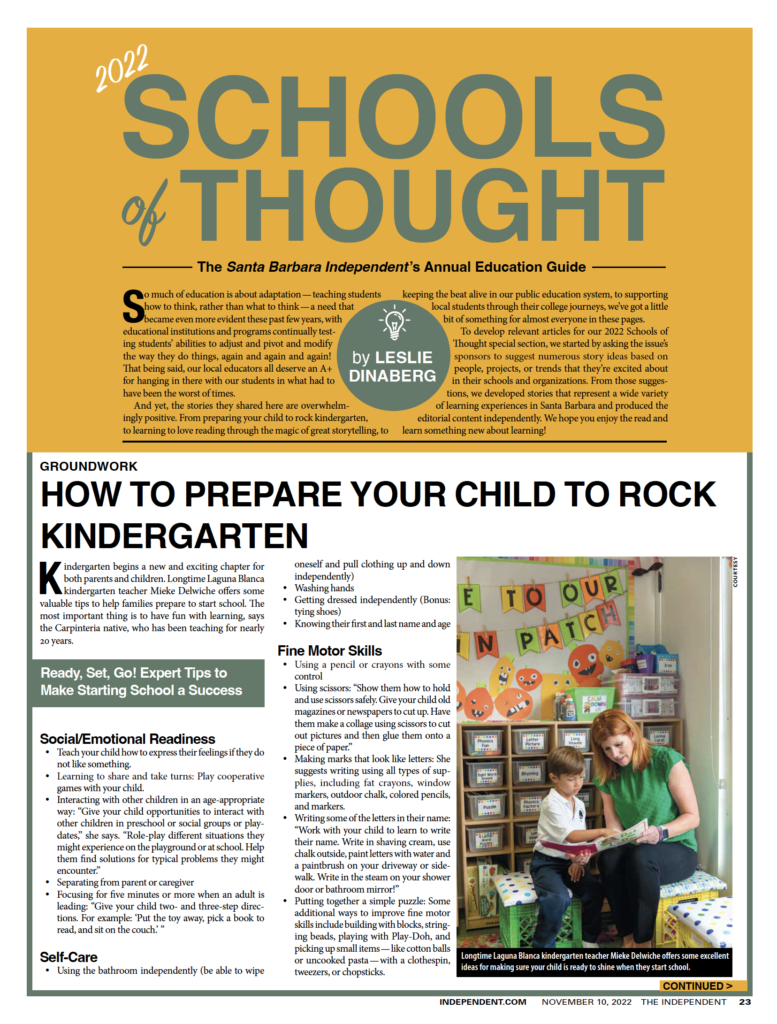
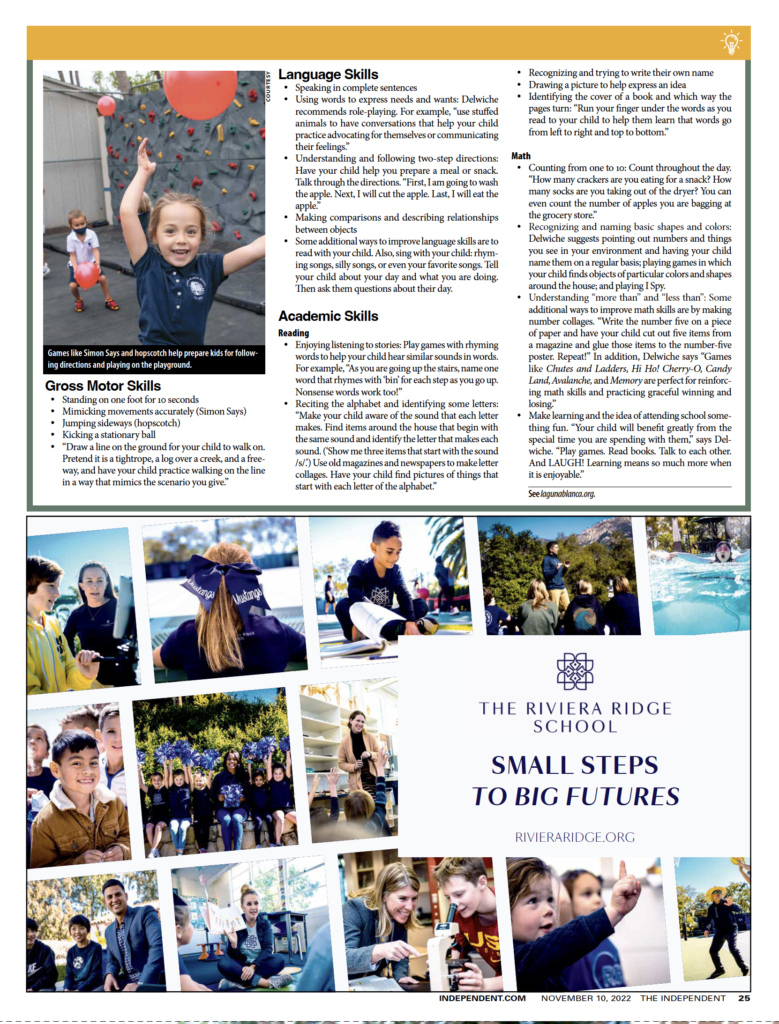
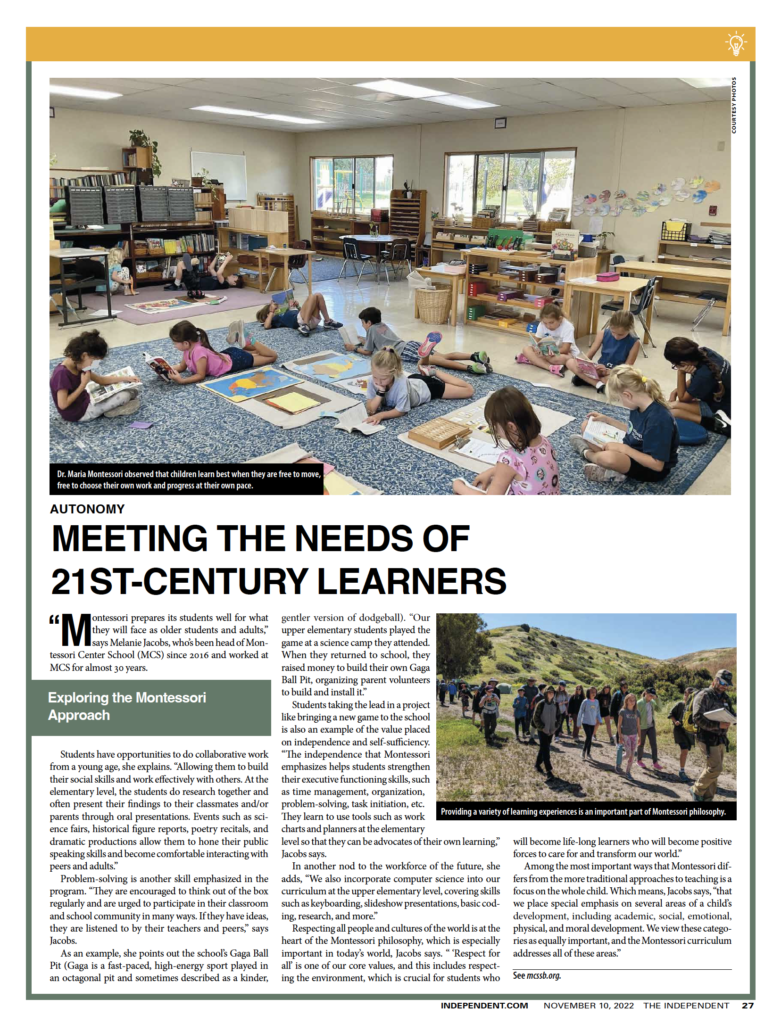
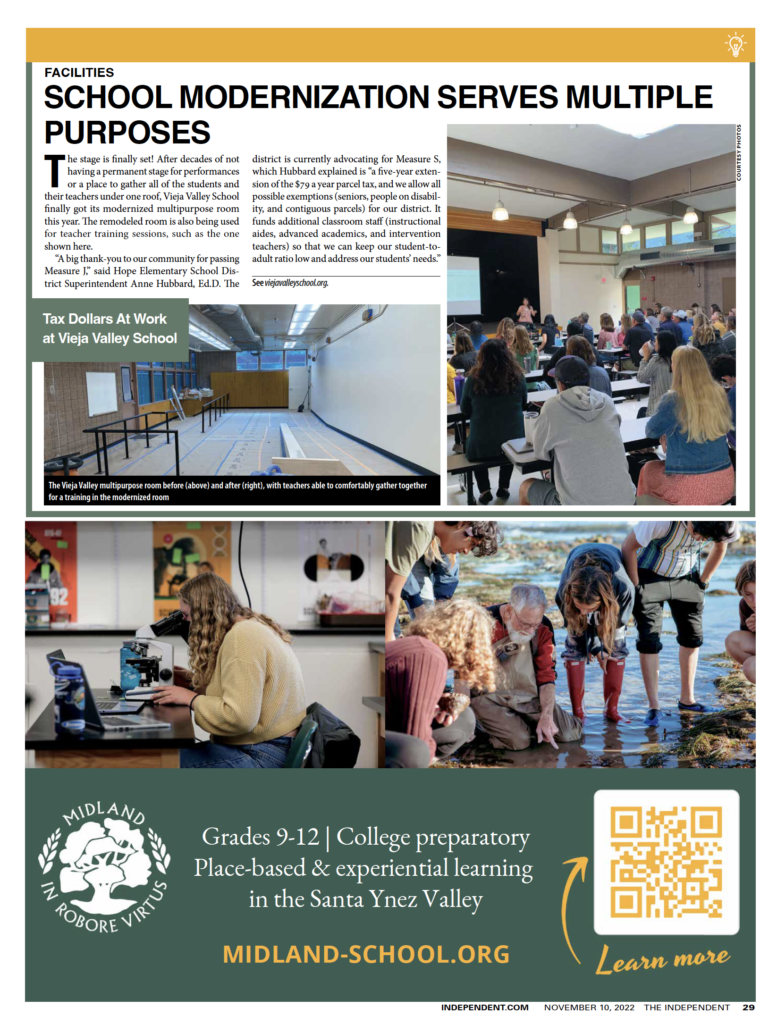
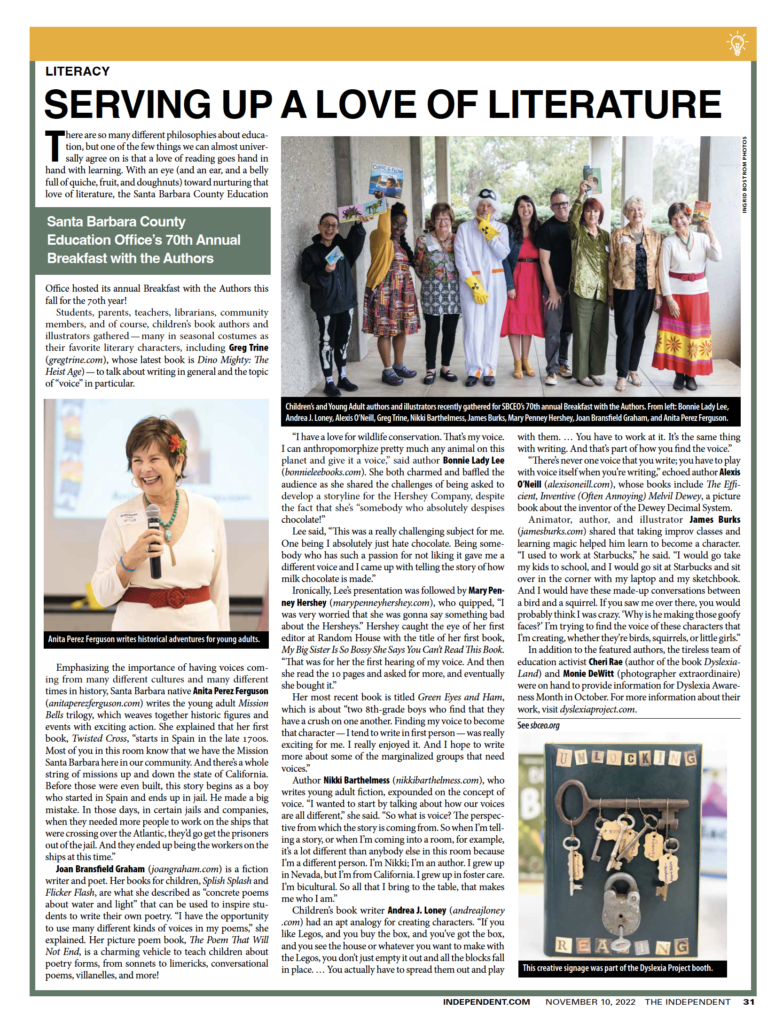
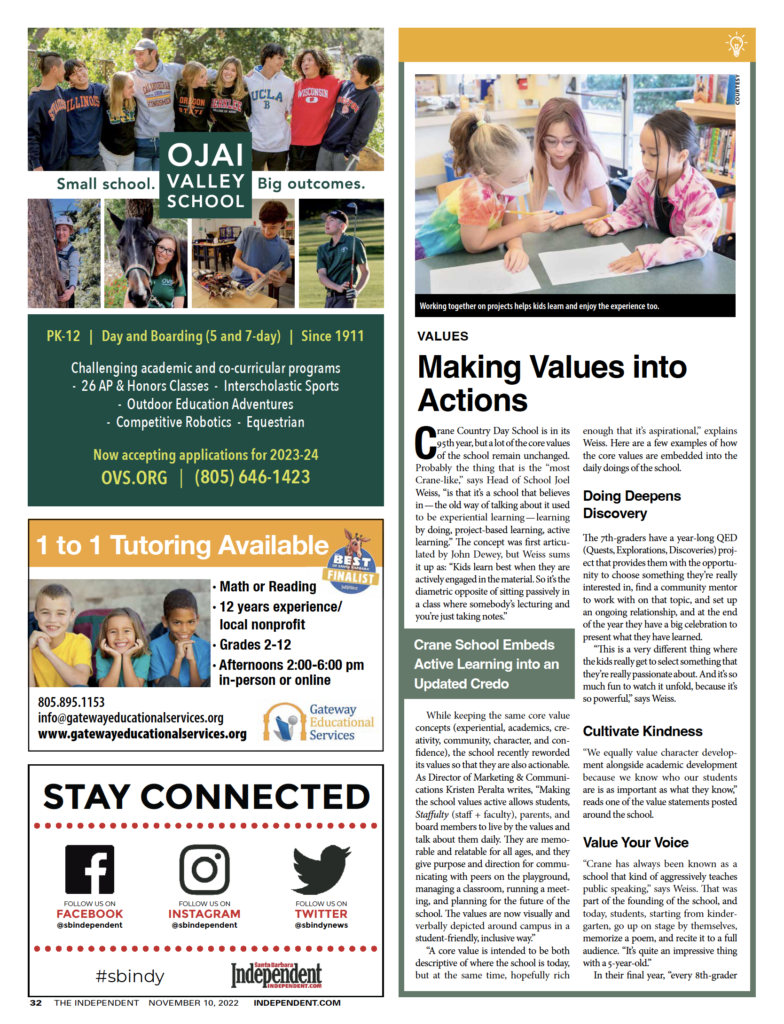
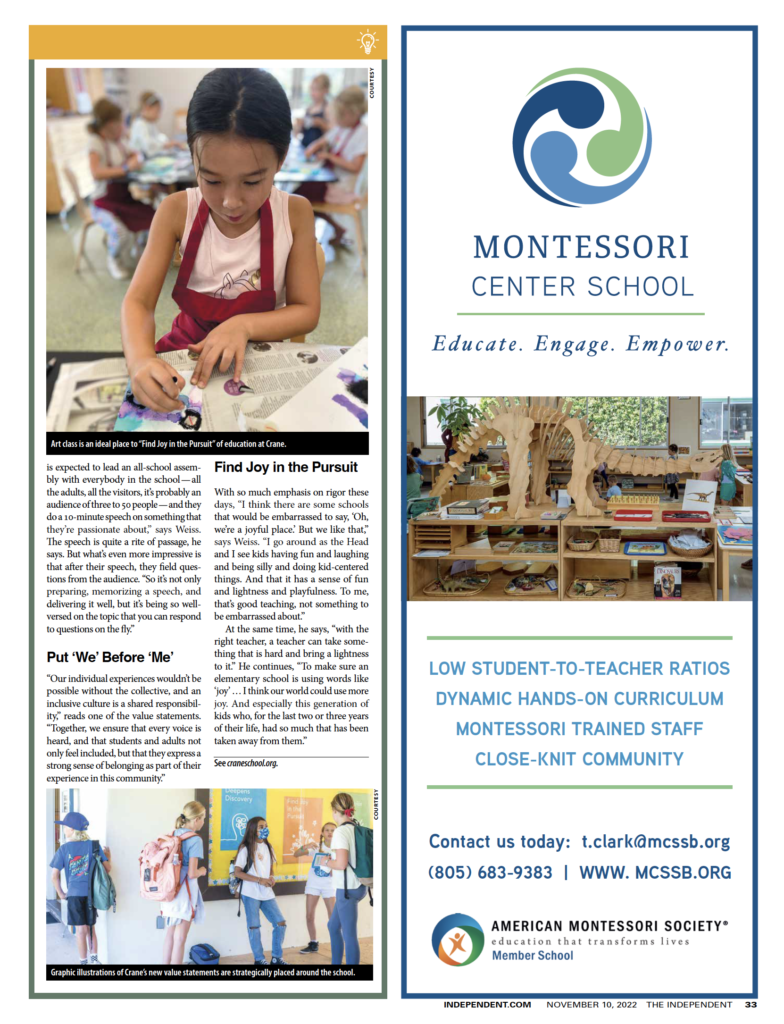
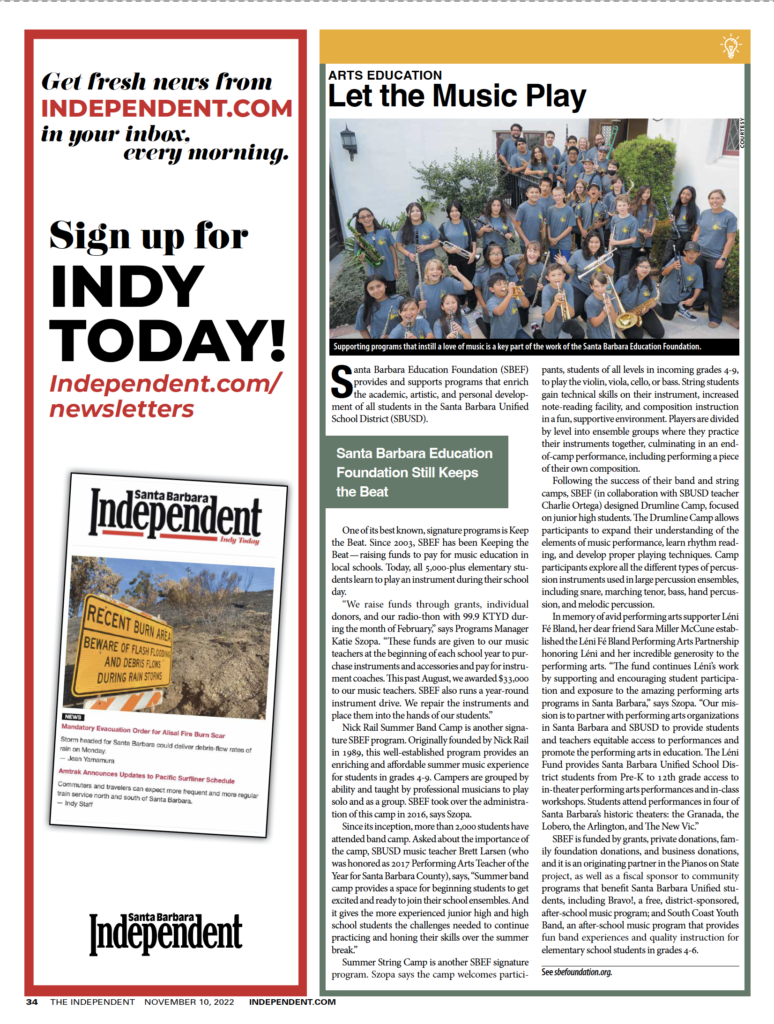
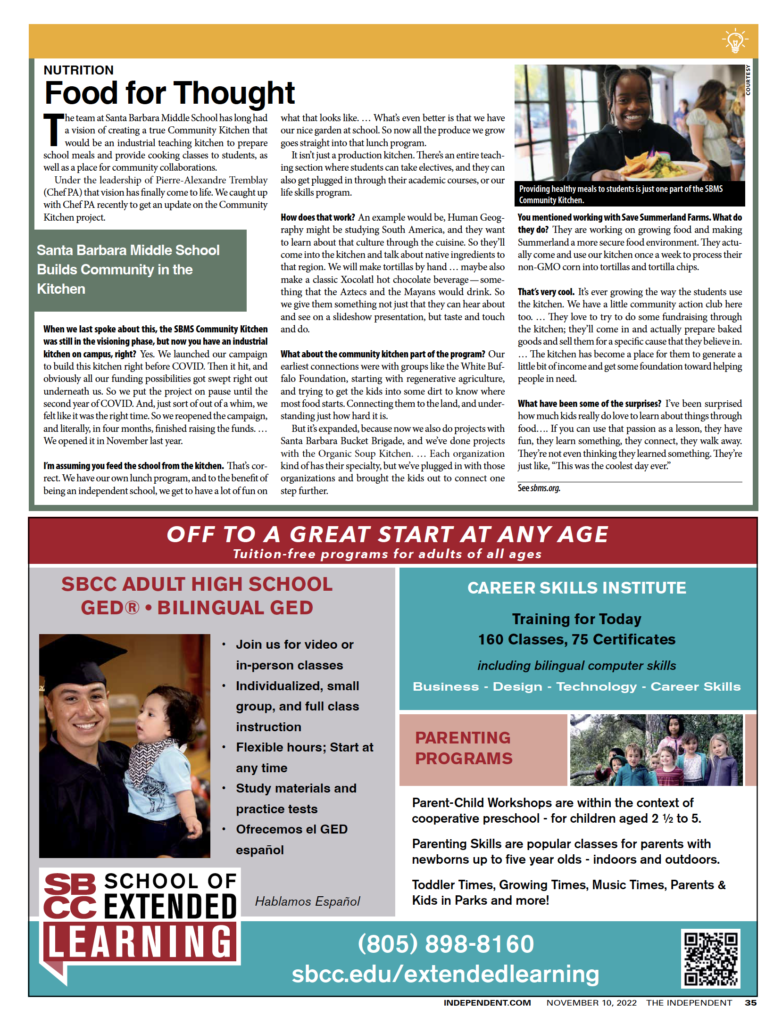
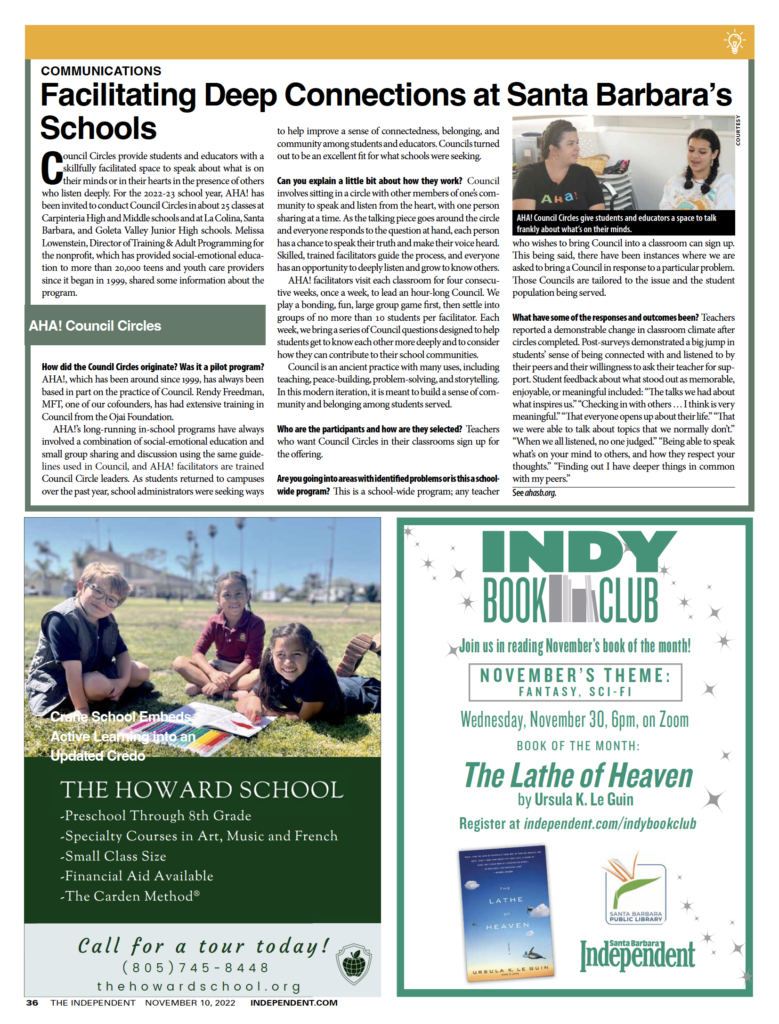
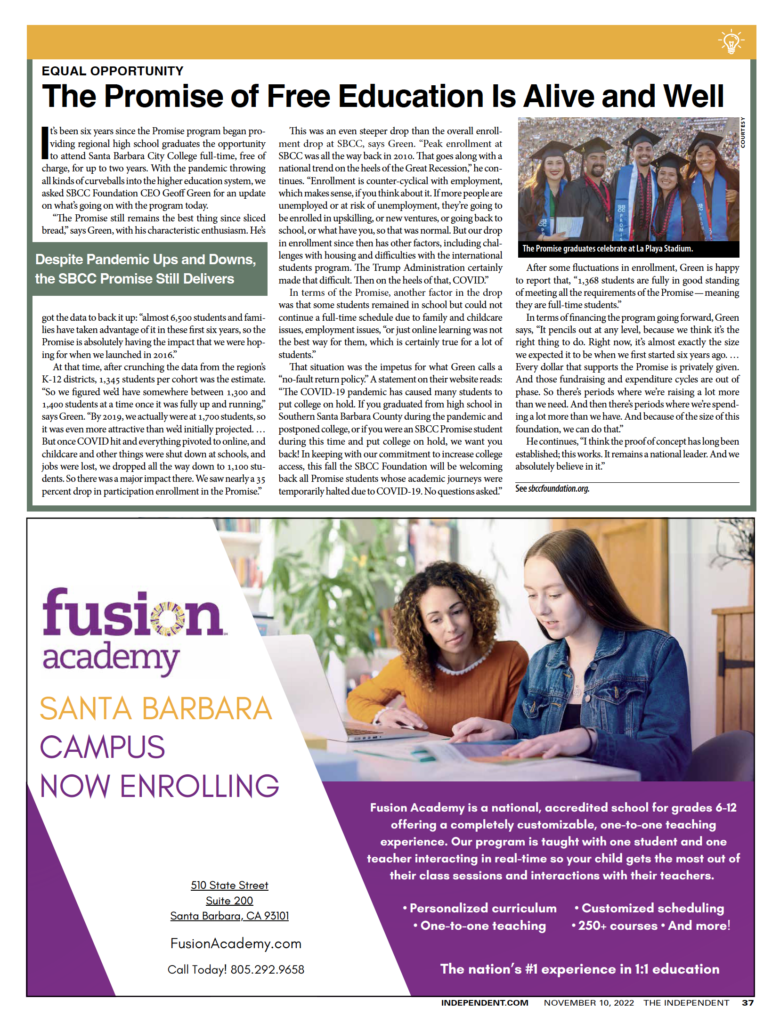
Category Archives: higher education
Shoe Designs That Step Up the Sustainability
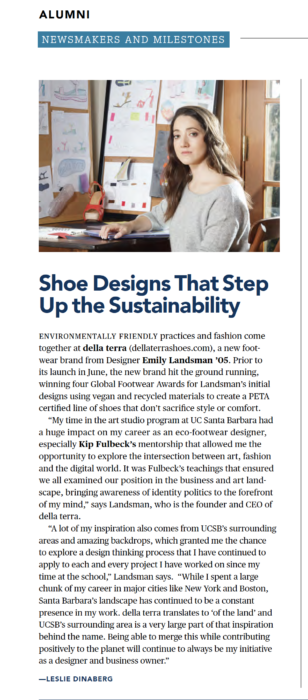 Environmentally friendly practices and fashion come together at della terra (dellaterrashoes.com), a new footwear brand from Designer Emily Landsman ’05. Prior to its launch in June, the new brand hit the ground running, winning four Global Footwear Awards for Landsman’s initial designs using vegan and recycled materials to create a PETA certified line of shoes that don’t sacrifice style or comfort.
Environmentally friendly practices and fashion come together at della terra (dellaterrashoes.com), a new footwear brand from Designer Emily Landsman ’05. Prior to its launch in June, the new brand hit the ground running, winning four Global Footwear Awards for Landsman’s initial designs using vegan and recycled materials to create a PETA certified line of shoes that don’t sacrifice style or comfort.
“My time in the art studio program at UC Santa Barbara had a huge impact on my career as an eco-footwear designer, especially Kip Fulbeck’s mentorship that allowed me the opportunity to explore the intersection between art, fashion and the digital world. It was Fulbeck’s teachings that ensured we all examined our position in the business and art landscape, bringing awareness of identity politics to the forefront of my mind,” says Landsman, who is the founder and CEO of della terra.
“A lot of my inspiration also comes from UCSB’s surrounding areas and amazing backdrops, which granted me the chance to explore a design thinking process that I have continued to apply to each and every project I have worked on since my time at the school,” Landsman says. “While I spent a large chunk of my career in major cities like New York and Boston, Santa Barbara’s landscape has continued to be a constant presence in my work. della terra translates to ‘of the land’ and UCSB’s surrounding area is a very large part of that inspiration behind the name. Being able to merge this while contributing positively to the planet will continue to always be my initiative as a designer and business owner.”
Originally published in the Fall/Winter 2021 issue of UC Santa Barbara Magazine. Cover illustration by Yumiko Glover. To see the story as it originally appeared click here.
Bringing Diverse Perspectives to the White House
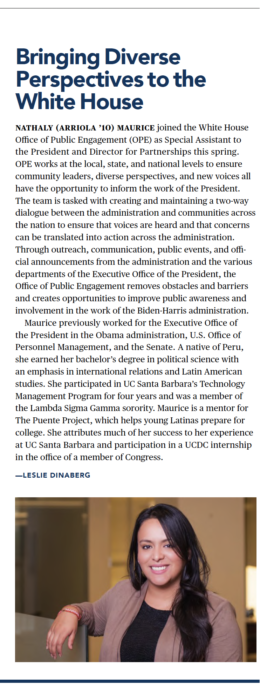 Nathaly (Arriola ’10) Maurice joined the White House Office of Public Engagement (OPE) as Special Assistant to the President and Director for Partnerships this spring. OPE works at the local, state, and national levels to ensure community leaders, diverse perspectives, and new voices all have the opportunity to inform the work of the President. The team is tasked with creating and maintaining a two-way dialogue between the administration and communities across the nation to ensure that voices are heard and that concerns can be translated into action across the administration. Through outreach, communication, public events, and official announcements from the administration and the various departments of the Executive Office of the President, the Office of Public Engagement removes obstacles and barriers and creates opportunities to improve public awareness and involvement in the work of the Biden-Harris administration.
Nathaly (Arriola ’10) Maurice joined the White House Office of Public Engagement (OPE) as Special Assistant to the President and Director for Partnerships this spring. OPE works at the local, state, and national levels to ensure community leaders, diverse perspectives, and new voices all have the opportunity to inform the work of the President. The team is tasked with creating and maintaining a two-way dialogue between the administration and communities across the nation to ensure that voices are heard and that concerns can be translated into action across the administration. Through outreach, communication, public events, and official announcements from the administration and the various departments of the Executive Office of the President, the Office of Public Engagement removes obstacles and barriers and creates opportunities to improve public awareness and involvement in the work of the Biden-Harris administration.
Maurice previously worked for the Executive Office of the President in the Obama administration, U.S. Office of Personnel Management, and the Senate. A native of Peru, she earned her bachelor’s degree in political science with an emphasis in international relations and Latin American studies. She participated in UC Santa Barbara’s Technology Management Program for four years and was a member of the Lambda Sigma Gamma sorority. Maurice is a mentor for The Puente Project, which helps young Latinas prepare for college. She attributes much of her success to her experience at UC Santa Barbara and participation in a UCDC internship in the office of a member of Congress.
Originally published in the Fall/Winter 2021 issue of UC Santa Barbara Magazine. Cover illustration by Yumiko Glover. To see the story as it originally appeared click here.
Elevated Reflections of Life — Artist Yumiko Glover MA ’17
Born and raised in Hiroshima, Japan, cover artist Yumiko Glover MA ‘17 took a circuitous route to finally following her passion.
“When I was applying for college in Japan I didn’t have a mentor to support me,” Glover recalls. “I wanted to go to art school and of course, my parents worried that it was ‘non job promising.’ So, I gave up and I majored in something else.” But the desire stuck with her. She took as many art classes as she could while working in the import-export business for more than a decade before returning to school to follow her dreams of becoming an artist. She completed a bachelor of fine arts degree at the University of Hawai’i at Mānoa in 2011 and then came to UC Santa Barbara to complete her masters in fine arts in 2017.
“I was not a good student in Japan in college because I was not really interested in the field. But when I went back to school, I was very serious,” laughs Glover, who is now a visiting lecturer in the UC Santa Barbara Department of Art, as well as a graphic designer and fine artist who has her work in collections at the Honolulu Museum of Art and on view at LAX, among other venues.
Over the years her style has evolved, but current events continue to influence her art.
Her “Unfold” series was inspired by President Barack Obama’s visit to Hiroshima in 2016. The first sitting president to visit the city destroyed by an American atomic bomb during World War II, Obama brought origami paper cranes that he folded himself. “Crane origami is a symbol for peace, wishing the best for others, and healing for challenging times,” says Glover.
Working on the premise that with each fold they make in an origami crane, people are thinking about others’ wellness or sending them good wishes, Glover drew geometric forms and combined them in different ways to create elements. “I thought that matched well with what we are going through in the pandemic,” she says.
Her ongoing series “Transience” also fits in thematically. “Living through the pandemic completely shifted everybody’s life, including myself, especially my perspective on approaching art,” says Glover.
“Transience comes from the Japanese term, mono no aware, which means the transience of life that is the aesthetics of impermanence — nothing lasts forever but there is preciousness to it. I created new paintings during the pandemic; one inspired by the cherry blossom season. As you know the cherry blossom has an intense and precious life and death cycle, which is mirrored by the impermanence of our nature and material world that we took for granted for so long.”
She continues, “During the pandemic, as everything that we thought would last forever became uncertain and our perspectives about life, including the subjects for the magazine — education, economy, mental health, work and environment — everything has changed and also affected me and the way I think, so when I received the concept of the magazine design, I could apply those ideas that I was going through during the pandemic to the design.”
Originally published in the Fall/Winter 2021 issue of UC Santa Barbara Magazine. Cover illustration by Yumiko Glover. To see the story as it originally appeared click here.
A New Way to See UCSB — Introducing UC Santa Barbara Magazine
I am the managing editor of a brand new publication, UC Santa Barbara Magazine. A glossy print publication and website offering a birds-eye view of the spectacular seaside university. From the people, programs, scholarly pursuits and trends that make UC Santa Barbara a world-class institution, to the sports, arts and culture, natural environment and vibrant students and vital alumni communities that enrich our campus experiences, UC Santa Barbara Magazine offers insight into the rich complexity of the university and its impact on the larger world around it.
Read the entire magazine online here. In addition, here are links to some of the stories I wrote.
The Short List: The Beat Goes On
Elevated Reflections of Life — Artist Yumiko Glover MA ’17
Bringing Diverse Perspectives to the White House
The Short List: The Beat Goes On (UC Santa Barbara Magazine)
“Like any of your senses — the act of listening to a song can conjure up feelings and, in this case, a love of your college days,” says Darla Bea ‘03 . As Stevie Wonder once said, “Music, at its essence, is what gives us memories. And the longer a song has existed in our lives, the more memories we have of it.”
Sporting slews of rave reviews from national wedding websites and voted Santa Barbara’s favorite DJ for six years in a row, Bea has made a career out of homing in on the visceral, emotional connection that tunes play in our lives. “Rock it Properly,” her weekly radio show that’s been running on KCSB since 2007, is a meticulously researched round-up of fun facts and musical magic.
When last year’s All Gaucho Reunion had to go virtual, Bea helped to make it memorable by creating seven different GauchoBeats playlists, curated by decade, from 1939 to the present. From Bill Haley & His Comets’ “(We’re Gonna) Rock Around the Clock” and The Beach Boys’ “Good Vibrations,” to Chumbawamba’s “Tubthumping” and Walk the Moon’s “Shut Up and Dance,” these Spotify playlists of feel-good tunes (alumni.ucsb.edu/events/all-gaucho-reunion#gauchobeats) brought some much-needed positivity during some rather grim days.
Of her time at UC Santa Barbara, Bea says, “The magic and music were always a thing that drew me out to hear bands play in Isla Vista and at UCSB, and of course I knew I was going to get an excellent education. I just wanted to be part of that.”
A Santa Barbara native who lived at home during college, she says, “I did not have a car, had a bus pass. I spent a lot of time on campus in the library and the bookstore. I loved looking at all the media out there; it was a really good bookstore. And every once in a while I’d have to call my dad to get me because I missed the last bus.”
Known for her colorful wigs, kicky costumes and eclectic mixes, Bea still comes to campus every Sunday to host her radio show, and says one of her goals is to, “expand your narrow way of thinking about music. The world is a lot smaller when you can grasp a culture, or an era, through their music.”
Originally published in the Fall/Winter 2021 issue of UC Santa Barbara Magazine. Cover illustration by Yumiko Glover. To see the story as it originally appeared click here.
Wheels of Fun (UC Santa Barbara Magazine)
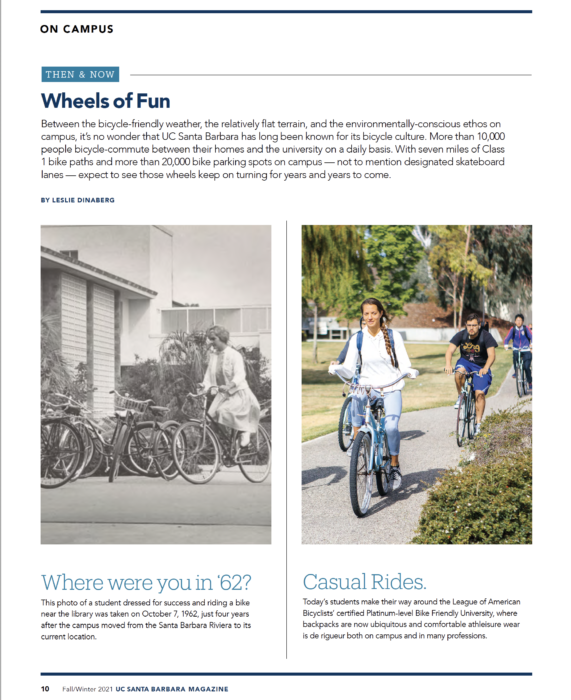 Between the bicycle-friendly weather, the relatively flat terrain, and the environmentally-conscious ethos on campus, it’s no wonder that UC Santa Barbara has long been known for its bicycle culture. More than 10,000 people bicycle-commute between their homes and the university on a daily basis. With seven miles of Class 1 bike paths and more than 20,000 bike parking spots on campus — not to mention designated skateboard lanes — expect to see those wheels keep on turning for years and years to come.
Between the bicycle-friendly weather, the relatively flat terrain, and the environmentally-conscious ethos on campus, it’s no wonder that UC Santa Barbara has long been known for its bicycle culture. More than 10,000 people bicycle-commute between their homes and the university on a daily basis. With seven miles of Class 1 bike paths and more than 20,000 bike parking spots on campus — not to mention designated skateboard lanes — expect to see those wheels keep on turning for years and years to come.
Where were you in ‘62?
This photo of a student dressed for success and riding a bike near the library was taken on October 7, 1962, just four years after the campus moved from the Santa Barbara Riviera to its current location.
Casual Rides.
Today’s students make their way around the League of American Bicyclists’ certified Platinum-level Bike Friendly University, where backpacks are now ubiquitous and comfortable athleisure wear is de rigueur both on campus and in many professions.
Originally published in the Fall/Winter 2021 issue of UC Santa Barbara Magazine. Cover illustration by Yumiko Glover. To see the story as it originally appeared click here.
Connect, Discuss, and Explore at Vistas Lifelong Learning
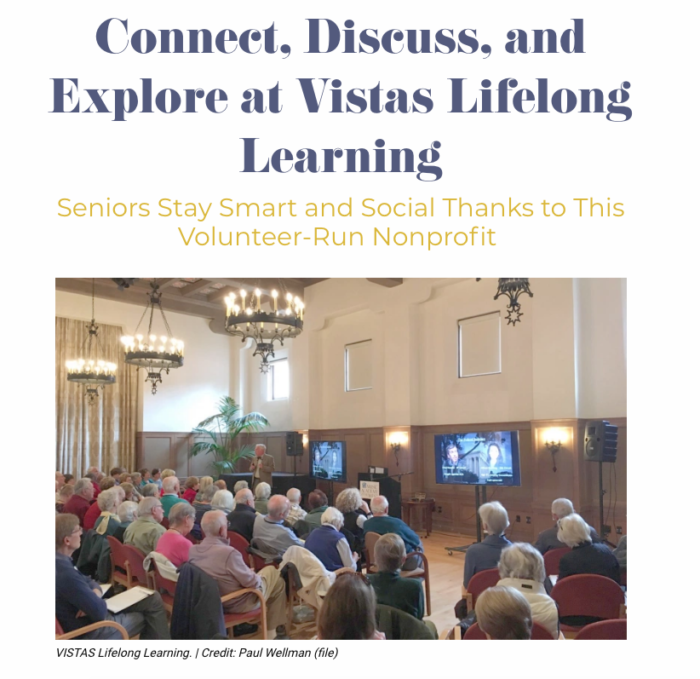 Learning new things and maintaining a vibrant social life are two of the key pillars that experts say will keep our brains sharp and healthy. This is exactly what the nonprofit Vistas Lifelong Learning (vistaslifelonglearning.org) offers to the community.
Learning new things and maintaining a vibrant social life are two of the key pillars that experts say will keep our brains sharp and healthy. This is exactly what the nonprofit Vistas Lifelong Learning (vistaslifelonglearning.org) offers to the community.
This volunteer-run organization, which started in 1999, is dedicated to keeping aging brains nimble with ongoing educational programs on a wide variety of topics. Recent
courses included Foods That Changed the World (exploring foods that have changed the world in profound and delicious social, political, and economic ways); Unpacking
the Dementia Epidemic (current thinking about the causes of dementias, dementia management, and how to stay on top of new developments); and Politics and
Religion in Verdi’s Operas (with audio and video extracts from modern performances of the operas).
The depth and variety of the programming is impressive, but the social component of Vistas is equally important to its success. “I think of all the connections that people find through Vistas,” said President Jim Hemmer. “There are two book clubs; there’s a short story class; there are memoir writing classes. And in our in-person programs — which moved to Zoom during the pandemic and will resume in the fall — there’s always a 20-minute coffee break in the middle so people can socialize and see old friends and meet other similarly situated people.”
For Hemmer, who retired from a career as an attorney in Chicago and moved to Santa Barbara with his wife, Francine, in January 2017, becoming part of Vistas has been a great way to engage his brain and find a community. Though it’s not a requirement, many of the Vistas presenters are members as well.
A longtime history buff, Hemmer found his way to the organization through a presentation on the Silk Road that he made to a luncheon group called The Cosmopolitan Club (sbcosmo.com). A Vistas member suggested he present to that group, and the response was so positive that Hemmer ended up teaching three different courses on the journey of the historical Silk Roads through China’s current efforts to reinvigorate them today.
“Vistas really attempts to satisfy this desire to learn things, and being a presenter is a wonderful way of doing that,” said Hemmer. “Taking other people’s classes is also great. I find that because I’m busy preparing presentations, I don’t have time to take all the classes I’d like to. I’ve been very busy during the pandemic, and it’s just great.”
Vistas is a small group, explained Hemmer, fluctuating between 300 and 400 members, and is not affiliated with any college or other institution. Programs are open to the public for a small fee, and the fees are less for members. (Annual membership fees are $40 per person for email-only communications and $50 for snail mail, with individual classes averaging $9 per session for members and $14 for nonmembers.)
“It’s a really varied and interesting group of people,” Hemmer says. The mostly retired members come from very diverse careers, ranging from former judges, teachers, and
docents to social workers, librarians, and secretaries, just to name a few.
Upcoming programs in the fall include a reprise of the Silk Road series; the short history of cryptography; the writer James Baldwin; climate change and the impact on the Great American Waterways; criminal procedure; economic issues; and the social safety net in the U.S., with additional courses and details still being finalized.
“We have a very, very wide palette. There’s somebody for everybody,” said Hemmer. “It’s a wide variety of programs on science, history, current events, music and fine arts, and so on.” Research suggests that humans learn better in social environments. “The brain is triggered more through discussion and questions than from solitary activities such as
independent reading,” said Hemmer.
“So it turns out that Vistas’ cooperative spirit that we’re all in it together and we get our ideas from other members is particularly beneficial in the case of seniors.”
See vistaslifelonglearning.org.
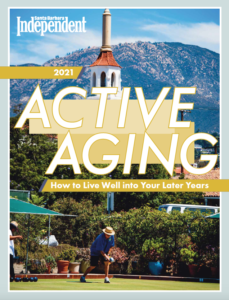 Originally published in The Santa Barbara Independent on August 12, 2021. Cover photo by Erick Madrid. To read this special section as it originally appeared in print, click here.
Originally published in The Santa Barbara Independent on August 12, 2021. Cover photo by Erick Madrid. To read this special section as it originally appeared in print, click here.
UCSB Arts & Lectures Patron Spotlight: Audrey & Timothy O. Fisher
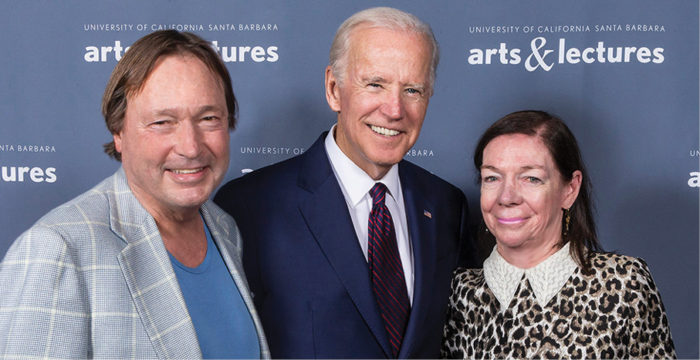
Event sponsors and A&L Council member Tim & Audrey Fisher with Joe Biden. Photo: UCSB Arts & Lectures.
For a town of its size, the cultural life of Santa Barbara is impressively full, say patrons Tim and Audrey Fisher. The couple have been involved with UCSB Arts & Lectures (A&L) since they bought a home in Montecito in 2000, and attended their first performance at Campbell Hall shortly afterward.
Miller McCune Executive Director Celesta Billeci and her team introduced themselves at intermission and the rest, as they say, is history. “We’ve been great friends ever since – we just love them,” says Audrey, a fashion designer and the retired president of a custom couture clothing business.
Tim was part of the creation of the Arts & Lectures Council in 2013. “We raised 25 million over three years and that really financially created a much better environment for A&L,” said the longtime businessman and philanthropist, who recently retired after more than 45 years of leadership in The Hillman Company. As a Council member, Tim guided the establishment of A&L’s legacy giving program and advocated enthusiastically for planned giving.
Audrey is a big fan of A&L’s expansive dance programs, as well as “the variety and the fact that they bring in just about every student, all ages. I like the educational aspect of it and exposing these kids to absolutely world-renowned performers and having it be a part of their everyday lives. … The cultural life is so enriched here.”
As for Tim’s favorite A&L memories, he says, “There have been so many over the years, but I would say most recently Joe Biden was really outstanding. He was very generous with his time and he did a Q&A and interacted with the students. I think it was really special.”
The Fishers recently made a generous donation to the endowment fund, which is important for arts funding, as Tim explains. “The reason nonprofits are called nonprofits is they don’t make money. What an endowment does is it creates a strong capital base. For instance, during this shutdown period A&L would really be struggling financially without the resources of the endowment. Endowments provide financial stability and they are also important because you don’t want the executive directors of nonprofits spending all their time raising money.”
Adds Audrey, “One reason that my foundation decided to support the endowment is because it’s the least appealing gift option for many contributors. It’s the hardest money to raise because people traditionally want to see what they are paying for. While we enjoy sponsoring performances, which we do every year, I think the endowments are kind of a lonely lost child in the family (laughs) and they really need support. I think when people become educated about their merits they do support endowments because there is a security factor.”
Supporting A&L is a family affair for the Fishers. As chair and a trustee of the Audrey Hillman Fisher Foundation, Audrey has given generously to A&L. Their son Matthew has sponsored musical performances and Tim and Audrey have supported a variety of events over the years, ranging from Joe Biden to the Vienna Philharmonic.
The Fisher family also sponsored the Forces of Nature environmental series in 2019-2020, in memory of their son Brooks, who was very good friends with filmmaker and environmentalist James Balog. “They used to go on these incredible exploits together,” says Audrey. Tim adds, “He was a friend of our son, who was an ardent conservationist. I think that for A&L cleaning up the environment is such a strong theme as it is in this country and globally. It’s a very worthy cause to support.”
The Fishers split their time between Santa Barbara and their hometown of Pittsburgh, and the cultural offerings of A&L make it easier for them to go from a bigger place to a smaller place. “In the early ’70s Jack Heinz created the Pittsburgh Cultural Trust which is a really big arts organization. Their budget is over 50 million and they have five theaters and they own a lot of downtown real estate. It’s a big operation, but I would say that we probably attend more events per year in Santa Barbara,” says Tim. “The cultural life here is every bit as full, in large part thanks to A&L.”
This story was originally published by UCSB Arts & Lectures. To see it as it originally appeared, please click here.
The Bridge to Somewhere
Admiring Santa Barbara Public Library’s Adult Literacy Programs
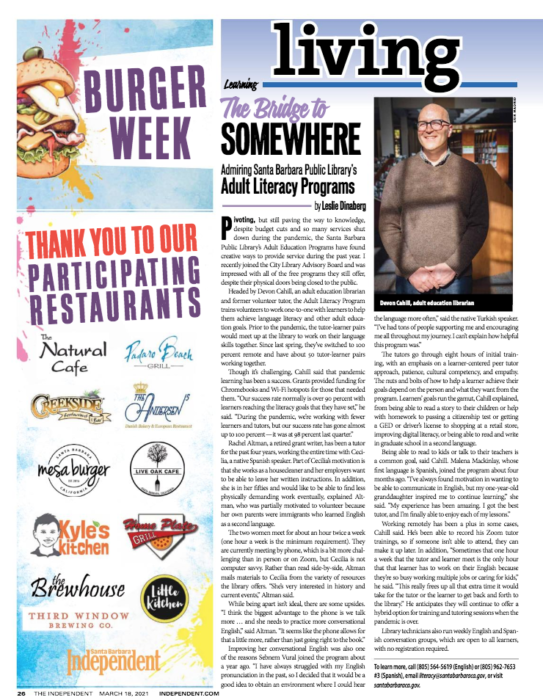
The Bridge to Somewhere (SB Public Library’s Adult Literacy Programs) was originally published in the Santa Barbara Independent on March 18, 2021.
Pivoting, but still paving the way to knowledge, despite budget cuts and so many services shut down during the pandemic, the Santa Barbara Public Library’s Adult Education Programs have found creative ways to provide service during the past year. I recently joined the City Library Advisory Board and was impressed with all of the free programs they still offer, despite their physical doors being closed to the public.
Headed by Devon Cahill, an adult education librarian and former volunteer tutor, the Adult Literacy Program trains volunteers to work one-to-one with learners to help them achieve language literacy and other adult education goals. Prior to the pandemic, the tutor-learner pairs would meet up at the library to work on their language skills together. Since last spring, they’ve switched to 100 percent remote and have about 50 tutor-learner pairs
working together.
Though it’s challenging, Cahill said that pandemic learning has been a success. Grants provided funding for Chromebooks and Wi-Fi hotspots for those that needed them. “Our success rate normally is over 90 percent with learners reaching the literacy goals that they have set,” he said. “During the pandemic, we’re working with fewer learners and tutors, but our success rate has gone almost up to 100 percent—it was at 98 percent last quarter.”
Rachel Altman, a retired grant writer, has been a tutor for the past four years, working the entire time with Cecilia, a native Spanish speaker. Part of Cecilia’s motivation is that she works as a housecleaner and her employers want to be able to leave her written instructions. In addition, she is in her fifties and would like to be able to find less physically demanding work eventually, explained Altman, who was partially motivated to volunteer because her own parents were immigrants who learned English as a second language.
The two women meet for about an hour twice a week (one hour a week is the minimum requirement). They are currently meeting by phone, which is a bit more challenging than in person or on Zoom, but Cecilia is not computer savvy. Rather than read side-by-side, Altman mails materials to Cecilia from the variety of resources the library offers. “She’s very interested in history and current events,” Altman said.
While being apart isn’t ideal, there are some upsides. “I think the biggest advantage to the phone is we talk more … and she needs to practice more conversational English,” said Altman. “It seems like the phone allows for that a little more, rather than just going right to the book.”
Improving her conversational English was also one of the reasons Sebnem Vural joined the program about a year ago. “I have always struggled with my English pronunciation in the past, so I decided that it would be a good idea to obtain an environment where I could hear the language more often,” said the native Turkish speaker. “I’ve had tons of people supporting me and encouraging me all throughout my journey. I can’t explain how helpful
this program was.”
The tutors go through eight hours of initial training, with an emphasis on a learner-centered peer tutor approach, patience, cultural competency, and empathy. The nuts and bolts of how to help a learner achieve their goals depend on the person and what they want from the program. Learners’ goals run the gamut, Cahill explained, from being able to read a story to their children or help with homework to passing a citizenship test or getting a GED or driver’s license to shopping at a retail store, improving digital literacy, or being able to read and write in graduate school in a second language.
Being able to read to kids or talk to their teachers is a common goal, said Cahill. Malena Mackinlay, whose first language is Spanish, joined the program about four months ago. “I’ve always found motivation in wanting to be able to communicate in English, but my one-year-old granddaughter inspired me to continue learning,” she said. “My experience has been amazing. I got the best tutor, and I’m finally able to enjoy each of my lessons.”
Working remotely has been a plus in some cases, Cahill said. He’s been able to record his Zoom tutor trainings, so if someone isn’t able to attend, they can make it up later. In addition, “Sometimes that one hour a week that the tutor and learner meet is the only hour
that that learner has to work on their English because they’re so busy working multiple jobs or caring for kids,” he said. “This really frees up all that extra time it would take for the tutor or the learner to get back and forth to the library.”
He anticipates they will continue to offer a hybrid option for training and tutoring sessions when the pandemic is over.
Library technicians also run weekly English and Spanish conversation groups, which are open to all learners, with no registration required.
To learn more, call (805) 564-5619 (English) or (805) 962-7653 #3 (Spanish), email literacy@santabarbaraca.gov, or visit santabarbaraca.gov.
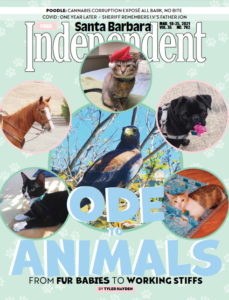 Click here to see this story as it originally appeared in the Santa Barbara Independent on March 18, 2021.
Click here to see this story as it originally appeared in the Santa Barbara Independent on March 18, 2021.

